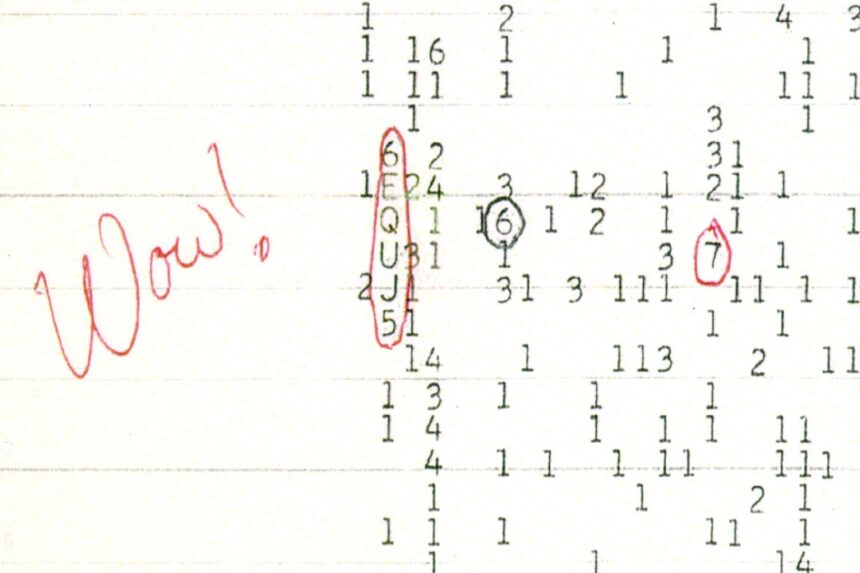Nearly 50 years ago, astronomers searching the cosmos for evidence of intelligent extraterrestrial life detected a strong radio signal emanating from deep space. Today, scientists still aren’t sure where—or what—the Wow! Signal came from. It remains one of the most perplexing phenomena in the history of radio astronomy.
A new study has brought scientists closer than ever to solving that mystery. Researchers from the Arecibo Wow! (AWOW) project at the Arecibo Observatory in Puerto Rico recently re-analyzed the signal and decades of unpublished observations that followed its detection. The findings, currently available on the preprint server arXiv and soon to be submitted to The Astrophysical Journal for peer review, significantly revise the Wow! Signal’s parameters and provide the most precise assessment to date, the researchers say.
A decades-long mystery
When the Big Ear Observatory in Ohio first detected the Wow! Signal on August 15, 1977, SETI (Search for Extraterrestrial Intelligence) astronomer Jerry R. Ehman was so dumbfounded by its intensity that he circled it in red and wrote “Wow!” beside it, hence the name. The signal immediately stood out to Ehman and his colleagues as a likely candidate for extraterrestrial radio transmission, but over the years, mounting evidence has pointed to natural explanations.
In recent years, researchers led by Abel Méndez—lead author of the new study and director of the Planetary Habitability Laboratory at the University of Puerto Rico—have contributed significantly to that evidence through the AWOW project. In August 2024, Méndez and his colleagues published findings that suggest the Wow! Signal stemmed from the sudden brightening of a cold hydrogen cloud due to a transient source of radiation such as a magnetar. These neutron stars have magnetic fields strong enough to excite the atoms in hydrogen clouds and elicit a burst of brightness.
Re-evaluating the Wow! Signal
Now, Méndez’s team has meticulously retrieved and analyzed decades of archival SETI data to re-evaluate the Wow! Signal’s properties and assess that hypothesis. Having access to modern data analysis tools and recent observations was a “game changer” for this study, Méndez told Gizmodo. Such advancements allowed his team to calculate more precise measurements for the Wow! Signal’s location of origin, intensity, and frequency. “In numbers, [these revisions] look small, but they are not small,” he said.
The researchers’ calculation for the signal’s intensity—or flux density—was four times greater than previous estimates, but the revised frequency was most surprising to Méndez. He and his colleagues found it to be 1420.726 MHz—much higher than they anticipated. The findings suggest the Wow! Signal came from a source within our galaxy, moving faster than scientists previously thought.
Mystery solved? Not yet
This adds weight to the researchers’ cold hydrogen cloud hypothesis and to the broader idea that this signal arose from a natural astrophysical phenomenon rather than terrestrial radio interference. That said, the case isn’t closed—yet.
“We are confident—and surprised—that we are getting closer,” Méndez said. Over the next two years, he and his colleagues will continue publishing new findings from the archival SETI data, hopefully progressing toward a solution to this decades-long mystery.
Correction: An earlier version of this article stated that the researchers submitted the study to The Astrophysical Journal for peer review on August 14. In fact, the researchers submitted the study to arXiv on August 14 and plan to submit it to APJ after incorporating feedback.
Read the full article here












